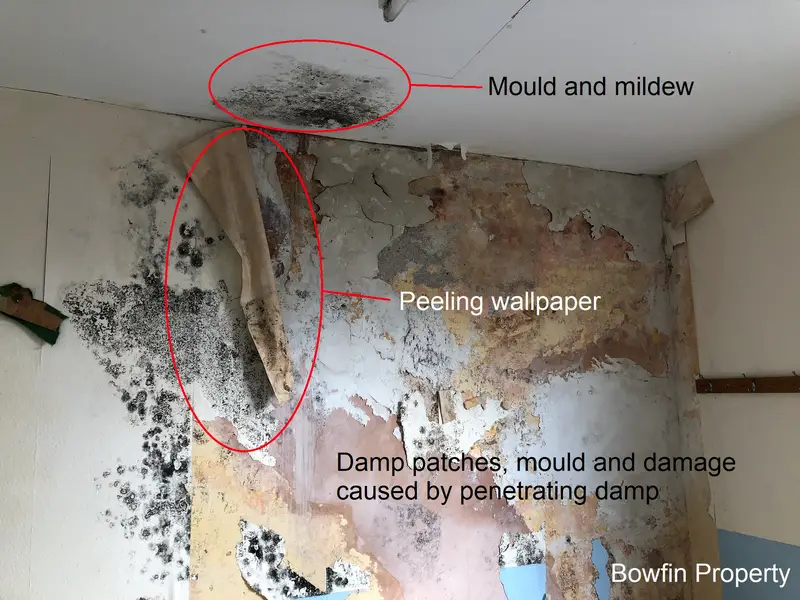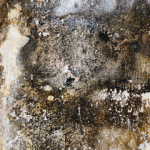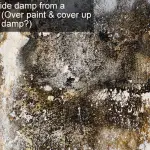
If you are in the process of buying a house you may be worried about finding damp, or it might be that your survey came back showing damp in the property you want to buy. Which leads on to the question; how do you find damp when viewing a house?
How you find damp when viewing a house includes using your sense of smell to pick up any musty damp smells in the property, looking for the appearance dark patches or for mould or mildew on the internal walls, floors or ceilings, or the peeling of wallpaper and condensation on windows.
Please also read this article to discover how you could save £71,475 on your next mortgage if you sell your house and rent before buying again. Even I was amazed when I did the calculations! The strategies you learn in this article will not only save you money, but it will also reduce the stress of buying your next home.
How to check for damp when viewing a house
- A musty damp smell: Mould and mildew are a consequence of damp and smells similar to rotting wood. The smell of damp is most often found in basements or cellars and in bathrooms or kitchens that don’t have extractor fans or if the fan isn’t working. However, if you smell damp when you walk into a property, this could be a sign of a bigger problem you should have investigated by a surveyor.
- Mould and mildew: Signs of dark patches or mould or mildew on the walls, floors or ceiling is a tell-tale sign the property has damp. If these mould patches are high up on the walls and ceiling it could be caused by condensation, but it may also be caused by penetrating damp too.
- Peeling wallpaper: Another sign of damp problems is when the wallpaper is lifting away from the walls, especially when combined with dark or mould and mildew patches.
- Condensation on windows: If you find condensation on the windows in the house this is a good indication the property has at least got a moisture problem which may simply be condensation. But moisture can also come from rising damp or penetrating damp too, so it’s important to have this checked by a professional.
How do surveyors check for damp?
Surveyors firstly check for damp visually to see if there are any tell-tale signs of a damp problem, but they also check for damp using a handheld moisture meter. The moister meter gives a reading of moisture levels in the walls, and if these are too high the surveyor will report a damp problem.
Can you check for damp yourself when buying a house?
You can check for damp yourself when buying a house if you know what to do, as it’s normally easy to spot signs of damp. Also, a handheld moisture meter is cheap to buy to check the walls, but be careful you check it correctly, because if you find damp after you purchase the house, there’s no comeback on a surveyor.
Is damp a reason not to buy a house?
Damp is not necessarily a reason to not buy a house, especially if you love the house and you’re part way through the buying process. Have the damp checked by a professional and ask the seller to either fix the problem or renegotiate on the price to take account of the cost to fix the damp problem.
To read more about this, please take a look at this article: Should I Buy A House That Has Damp? (Renegotiate Or Walk Away?). This article talks about buying a house with the different forms of damp and what causes each type.
How much does damp devalue a house?
Damp devalues a house by at least the cost of rectifying the problem, but likely by much more as not all buyers will buy houses with damp, so the value will reflect its reduced popularity and will account for the hassle factor to fix it. But in an extreme case in the USA a property lost 53% of its value due to damp.
I am well aware of the long term affects that damp can have, as my daughter has certain autoimmune problems now that she is older. These problems have been linked to mould spores in her system.
When she was younger we lived in a property that had a known damp problem when we purchased it, and the property’s value reflected the bad state of repair and issues with damp. In fact this was my very first renovation project.
But little did I know that years later this would cause problems for my daughter. The good news is she is now on medication and a changed diet to correct the problem. You may also be interested to read this quote from a Case Study on “The House of Mould” from The Communicator (Finigan 2001):
“mold “is the next asbestos—with a major difference. It doesn’t have asbestos’s thirty-year gestation period.” The author goes on to say that “mold can absolutely have a significant impact on value!”
Case Study by Marion R. Johnson, CAE, Paul A. Welcome, CAE, and Darla Frank, CAE
Final thoughts on how do you find damp when viewing a house
A mistake I made with one of my first investment properties that had damp is I agreed with the vendor a reduction in the purchase price. What I failed to do before completing on the deal was to have a full costing done to fix the problem.
The reduction in the asking price from memory (bearing in mind this was nearly 20 years ago, so I can’t remember exactly), was about £1,000. But the quote to fix the damp problem was closer to £5,000, which came in after I’d completed on the deal. A lesson learned in property buying.
You may like to take a read of this article: How Do I Get Rid Of Damp Quickly From My House. The article explains more about the three types of damp, which includes:
- Condensation (easy and cheap to fix);
- Penetrating damp (also usually easy to fix and will often be obvious like a broken gutter); or
- Rising damp (very rare and more expensive to fix if you have it).
Makes sure you check if the damp problem is in fact rising damp or penetrating damp, rather than as a result of a condensation problem in the house.
Condensation is usually cheap and easy to resolve, and can be as simple as installing or fixing an extractor fan in a bathroom or in the kitchen, installing vents to vent moisture, or by using a clothes dryer instead of hanging washing on radiators.
But if your survey has identified a damp problem, chances are it’s more than just condensation. The challenge with these situations is the damp problem only comes out once you’ve already spent money on a survey, at which point you will also have spent money on conveyancing legal fees too.
If the vendor isn’t willing to negotiate on price, your decision is about whether to walk away and lose what you’ve already spent, or to press on anyway and buy the property in spite of the damp problem.
Please don’t forget to read this before you leave…
Please don’t forget to also read this article to discover how you could save £71,475 on your next mortgage if you sell your house and rent before buying again. As I said earlier, even I was amazed when I did the calculations! Learn about how you will reduce the stress of moving house, whilst at the same time potentially save thousands in the process!
I hope you’ve enjoyed this article about how do you find damp when viewing a house
f you’ve enjoyed this article about “how do you find damp when viewing a house” please share it on your favourite social media site.
Also, if you have any questions, please feel free to comment below too. Please also share any of your experiences with properties you’ve bought. Alternatively, if you need more help, please feel free to contact us on our contact us page here. Or join the discussion and ask your question in the property forum.




